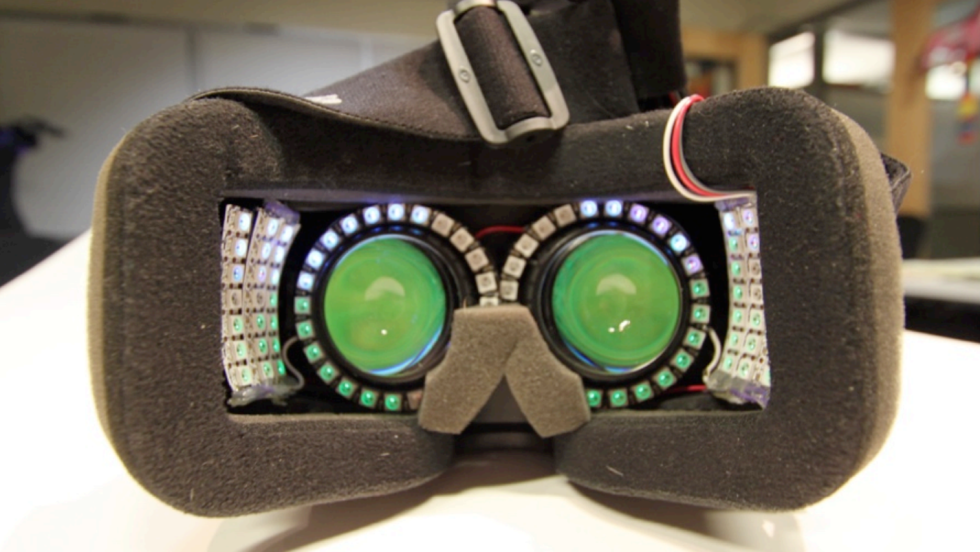Eurogamer feature also uncovers Milo and Kate‘s failings, battles with Xbox marketing.
Looks like gamers didn’t have to wait long after the fall of British studio Lionhead to get a behind-the-scenes tell-all. Only two months after the maker of Fable was shuttered, the staff at Eurogamer has pieced together a massive feature recounting stories from multiple sources, on the record and anonymous, about the good, the bad, and the “shit” of its entire history.
All of the company’s big misses are on show here, particularly those of Milo and Kate and Fable Legends, but the feature is even-handed about spreading both blame and compliments as needed. Microsoft is given knocks for corporate-minded complaints yet is praised for fostering the company’s creative spirit and mostly staying out of the way of the game development process during and after its Fable 2 peak, while studio founder Peter Molyneux is cast as both an over-promising, under-delivering dreamer and as a genius producer and game director who got the most out of his team (and protected devs from MS’ prying eyes).
Molyneux, to his credit, participated fully in the feature and minced no words about himself: "I'm a complete twat... There were many times my huge mouth got in the way of common sense." Former Microsoft employees went on the record, as well, while Microsoft itself declined to comment.
Among the feature’s many highlights:
Not free-to-make: By the time the free-to-play co-op game Fable Legends was canceled, it’d burnt through a lot of money. An unnamed source pegged the total at roughly $75 million. Yes, we said dollars, not pounds (which would be about £50 million), which makes us think Eurogamer got that tally from a Redmond, Washington, source as opposed to one from Lionhead's former Guildford, UK, office.
"Legends should have been dirt cheap to produce, that's the whole point of a free-to-play game," an unnamed source told Eurogamer. "If people don't like the game, you take a small cut. If they do, you build more of what the people want. Legends cost a large amount of money and was delayed countless times so we could show off some other piece of Microsoft tech."
Canceled games: Microsoft's 2012 insistence on a free-to-play game from Lionhead, as opposed to another offline, single-player adventure, meant hopes for a sprawling new Fable 4, set in a steampunk-esque London, were squashed. "You've had three shots [at a single-player Fable] and you've only tripled the money," Lionhead Art Director John McCormack told Eurogamer when paraphrasing Microsoft's thoughts on a sequel.
Lionhead was also toying with a three-part game, code-named Project Opal, that would connect players on PC, Xbox, and mobile with different games on each. The mobile fishing game and Xbox combat-adventure game would complement a PC world-building game, but the project was only in development for six months, and it was shuttered soon after Molyneux left Lionhead to form a new studio and confuse the public with a pair of weird games.
Smoke and mirrors: Lionhead reps went on the record to say what many in the public had long assumed and asserted: that Milo and Kate's first reveal was made up of wholly pre-rendered content, and that version was predicated on a higher-powered version of Kinect that never came to be. By the time the project was canned, it had dwindled from its initial promise of a fully responsive virtual-child relationship game. Instead, it only allowed players to engage in mini-games like moving objects around the titular boy's bedroom—all to distract him while his parents could be heard (but not seen) getting into arguments. This, the developers told Eurogamer, meant that worries of the game working as a "pedophile simulator" would have been squashed if people had seen how rudimentary the game actually turned out.
"The disaster that struck was everybody realized just how much it would cost to make a Kinect that had the field of view and the depth and the precision that would be necessary to give very fine motor control," Molyneux told Eurogamer. "The specs of the Kinect went lower and lower and lower and lower and lower, until eventually it was a fraction of what Milo and Kate had been designed for.
Box art battle: In addition to complaints about Microsoft's corporate training regimen and an alleged tying of Metacritic review scores to developer pay bonuses, Fable Art Director John McCormack recounted an ongoing struggle with Fable 2's marketing team.
"The marketing was shit," McCormack told Eurogamer, explaining that Lionhead had been stuck with an outside-of-Microsoft marketing firm. "They were going, what are you making? An RPG? Right, dragons and shit. And that was their advert. And we were like, no, ours is a Monty Python-esque comedy. And they went, look, we know how to market RPGs. And they opened the RPG marketing drawer and pulled out a picture of a dragon that wasn't even in the game and went there you go. That's your market.”
McCormack also faced off against that marketing group over the game’s box art. His push to put a black woman on the cover—and to emphasize progressive features in the game like gay marriage—were rejected by a marketing team that insisted on “the usual white guy with a sword on the front.” The marketing team asked McCormack what the least successful Disney film up until that point had been. “They went, ‘Princess and the Frog. Work it out.’ I was like, ‘Fuck you, man.’ I hated it.”
These are but a few of the many anecdotes and nuggets in Eurogamer's feature, which pointed out a constant problem for game development at Lionhead: that the studio would spend years working on titles that had tons of features but felt aimless and often rushed. This feature, appropriately, feels the same, with many disjointed stories sewn together by little more than their place in a timeline, but it's an astounding read that any fan—or hater—of Peter Molyneux should carve out some time to peruse.







